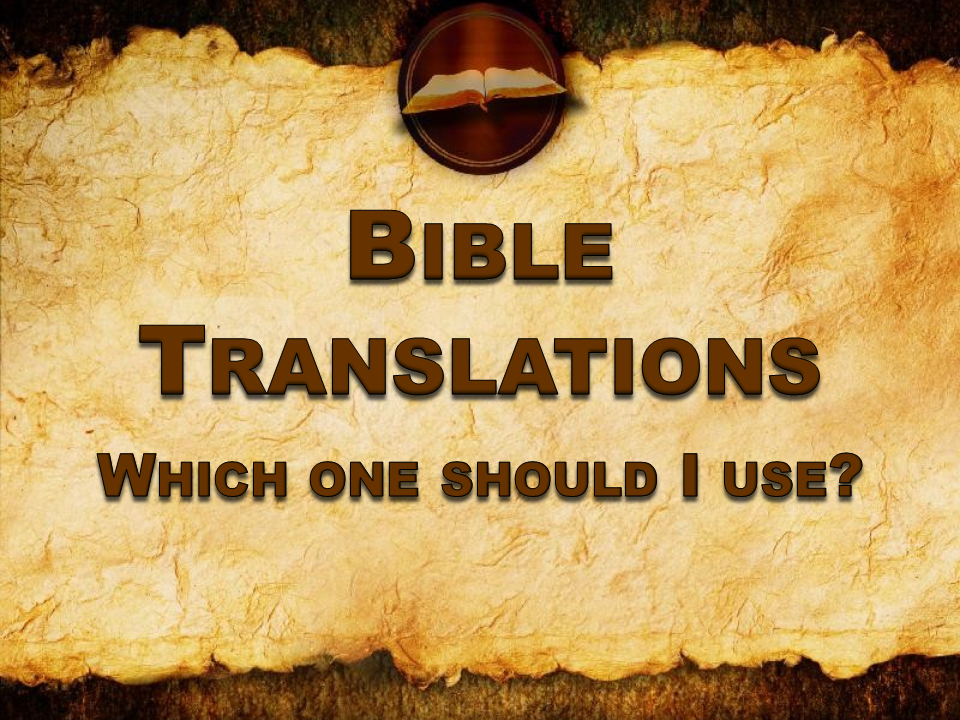 Imagine being a new Christian, thrilled about your newfound faith, and anticipating learning more about God. You know that you should read the Bible, so you wander into the closest Christian bookstore and find yourself in the “Bibles” section. You are not, however, prepared for what you find. There are black Bibles, brown Bibles, blue Bibles, and even pink Bibles. Some are designed for single folks, others for divorcees. Some are pocket-sized while others have print as large as the “E” on your eye doctor’s wall. To make matters worse, you find yourself drowning in an alphabet soup. You see KJV, NKJV, NIV, TNIV, NLT, ESV, HCSB . . . and the list goes on. Finally, you close your eyes and randomly select one, eagerly anticipating showing it to your Christian friends. When you do, the look of disgust on their faces indicates that you made a grave mistake. In your naivety, you inadvertently chose the “wrong” Bible.
Imagine being a new Christian, thrilled about your newfound faith, and anticipating learning more about God. You know that you should read the Bible, so you wander into the closest Christian bookstore and find yourself in the “Bibles” section. You are not, however, prepared for what you find. There are black Bibles, brown Bibles, blue Bibles, and even pink Bibles. Some are designed for single folks, others for divorcees. Some are pocket-sized while others have print as large as the “E” on your eye doctor’s wall. To make matters worse, you find yourself drowning in an alphabet soup. You see KJV, NKJV, NIV, TNIV, NLT, ESV, HCSB . . . and the list goes on. Finally, you close your eyes and randomly select one, eagerly anticipating showing it to your Christian friends. When you do, the look of disgust on their faces indicates that you made a grave mistake. In your naivety, you inadvertently chose the “wrong” Bible.
According to my observation, one of the most divisive issues in churches and between individual Christians is the topic of Bible translations. While to some this is simply a matter of preference, to others it holds immense doctrinal significance. After all, if we mess with the Bible, are we not tampering with the Word of God?
What follows is the result of my own personal study on this issue. It is not my purpose in this study to incite a righteous riot or to make you think like me. Neither is it meant to be exhaustive. It is merely the results of my own study on the matter. Therefore, I ask that you read it with an open mind. You may not come to the same conclusions as I have, but if you offer me grace, I will do the same for you.
The History of the Bible
The Bible did not come to us in a neat little package, leather-bound with the words of Jesus inscribed in red letters. To be honest, as I study the history of the Bible, sometimes I wish it would have. Then all the underlying texts would be the same, there would never have been any arguments over which books should have been included, and there would be no divisions over translations. However, God had His reasons for doing it the way He did, which we will discuss below. Because the history of the Bible is a little more cluttered and disorganized than some of us would like it to be, we need to make sure that we gain a clear understanding of how it came to us. Rather than inviting doubt about whether this book can be trusted, I hope that our appreciation for the miracle that it is will be increased.
Although we are not going to study the origin of each book of the Bible, it will be helpful to take an overall look at how the individual books came to be. In the Old Testament, many of the books are accounts of history. Moses and others recorded events that were of historical importance, mainly to the nation of Israel. Many of the books describe the lives and message of prophets that God sent, primarily to Israel and Judah. The New Testament is comprised of gospels that describe the life of Jesus, a book of history (Acts), and some letters (epistles) sent by Paul and others to individuals and churches.
Exactly how the writers received some of their information (such as details about creation) is a mystery to us. God may have revealed it to them some way, or in some cases they may have recorded what previously had been oral tradition. Although we do not know exactly how it happened, we believe that the final result was exactly what God wanted. The Apostle Paul made this clear in his letter to Timothy, when he said that “all Scripture is given by inspiration of God” (2 Tim. 3:16). The phrase “given by inspiration of God” is translated from the Greek word theopneustos, which literally means “God-breathed.” Somehow God put within these men the words that He wanted on the page. Millard Erickson helps us with the definition of inspiration, stating that it is “that supernatural influence of the Holy Spirit on the Scripture writers which rendered their writings an accurate record of the revelation or which resulted in what they wrote actually being the Word of God.” [i]
The Bible came into being as men of God were “moved by the Holy Spirit” (2 Pet. 1:21), but even a casual reading indicates different styles of writing between the authors and varying slants of interpretation, depending upon the circumstances of the recipients. Erickson points out that inspiration “presupposes a long process of God’s providential working with the author.”[ii] In other words, God had used their life experiences to make them ready to record His words. These were men who were shaped by the prevailing culture of their day as well as their own educational backgrounds. While God could have dictated the Bible, He chose instead for His Word to be saturated with first century culture and language (in the case of the New Testament).
I believe in both the verbal and plenary inspiration of the Bible. Plenary indicates that the Bible as a whole is inspired, while verbal means that every word was inspired. While I do not subscribe to the idea that God dictated Scripture word-for-word, I do believe that the words written down were exactly the words that God wanted.
Over time, these books began to be recognized as special. The Jewish writings (the Old Testament) were widely accepted by the Jews (and the early church) as authoritative. Acceptance of the New Testament books, however, was much more difficult, but by the fourth century AD writings of the church fathers indicate that the twenty-seven books in our New Testament were widely accepted as canonical (part of official Scripture).
If you have ever heard two people debating Bible versions, you know that it can be quite entertaining (and, may I add, heated). However, if you listen closely, you will find that many of the arguments against modern versions are actually objections to “changes to the original” and arguments for new versions are that they are “easy to read.” In my experience, few can take this discussion to a deeper level, which is necessary to form a learned opinion. If you truly want to understand the issue of Bible versions, you need to have a basic understanding of two areas: the underlying texts and methods of translation. To begin, let’s look at the issue of the underlying texts.
Click here to see the next section: Underlying Texts
Click here to download all four sections in PDF
Section 1: History of the Bible
Section 2: Underlying Texts
Section 3: Methods of Translation
Section 4: How to Choose a Translation
[i] Millard Erickson, Christian Theology, 2nd ed. (New York: Baker Book House, 1998), 225.
[ii] Ibid., 243.



